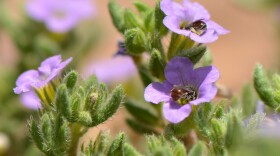How might a plant come to be known as "rattlesnake master" by Native Americans? Can the "compass plant" actually aid in navigation? Flipping through a copy of a recent gardening catalog, the unusual noms de plume of some plant life piqued my interest and inspired me to dig a little deeper into their meanings. On today’s Growing on the High Plains, I’ll introduce you to a handful of these curiously named native prairie plants and the fascinating origin stories of their mysterious monikers. It nothing to be "sneezeweed" at.








